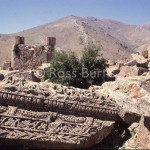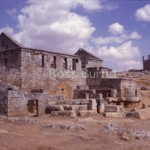Bara (al-Bara) البارة
The ruins of the Byzantine town of Bara are some of the most extensive in the Limestone Massif west of Aleppo in northern Syria. Over five churches, tombs with striking pyramid-shaped roofs, at least one monastery and a donjon originating from the Crusader period dot the landscape. تعتبر بقايا البلدة البيزنطية في البارة واحدة من […]





